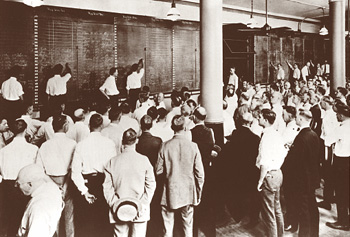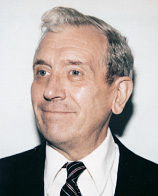 |
|||||||
|
The 1900's-2000's:
11
12
13
14
15
16
17
18
19
20
21
22
< previous
next >
In addition to being a veteran newspaperman, Eric was an accomplished sailor. In 1963, he skippered the 12-meter Constellation in its successful defense of the America's Cup. In the 1970s, Eric turned the JoC's longtime print compilation of all the cargoes entering and leaving U.S. ports into a computerized service called PIERS, the Port Import/Export Reporting Service, which was to prove immensely successful. In a major coup, he moved the paper's printing plant out of New York to Phillipsburg, N.J. The move saved the newspaper from the labor strife that by 1964 caused the demise of such legendary New York dailies as the Herald Tribune, the Journal-American and the World-Telegram & Sun. Stanley Ferguson, a superb writer and wry wit, succeeded Heinz Luedicke as editor at the start of this expansion. Ferguson was succeeded by Harold Gold, a wise and patient editor who guided the paper ever more deeply into transportation news. The JoC flourished during the 1960s and 1970s with the expansion of shipping and world trade. Revenue from the shipping lines that advertised their schedules in the paper's shipcard advertisements boomed, enabling the paper to open new bureaus in the major U.S. ports on all three coasts. It expanded its overseas coverage with full-time bureaus in London, Paris, Bonn and Tokyo, and hired stringers in many other shipping and business centers. JoC reporters developed a following in the industries they covered. One of its best-known writers from the 1950s through the mid-1970s was Francis Edmonds Tyng, considered the dean of banking reporters covering the Federal Reserve System. Richard Malkin was the acknowledged expert on air cargo. Stories by Richard Lawrence and Keith Rockwell in the Washington bureau and Emma Doran in New York were avidly read by anyone involved in foreign trade. Bankers and government leaders in Europe and the U.S. turned to Alena Wels’ articles for her insights into developments in international banking and finance. “She had a deeper and subtler understanding of international financial and economic developments than almost any other journalist I have ever met,” said Christopher McMahan, former chairman of Midland Bank and deputy governor of the Bank of England.
The maritime industry relied on the detailed and authoritative coverage by its shipping editors, George Panitz and Alan Schoedel. Their ability to stay ahead of the news with uncannily accurate reports drew respect from shipping executives and union leaders alike. The JoC served as a proving ground for many young reporters who went on to become journalistic legends. Martin Mayer, author of numerous books on finance, started in journalism at the JoC. Other noted alumni include the late Hobart Rowan, longtime economics columnist of the Washington Post, and Osborne Elliott, a top editor at Newsweek before becoming dean of the Columbia University School of Journalism. In 1973, the JoC scored one of the biggest “scoops” in its history. Just after the so-called Yom Kippur War, two reporters learned that a coalition of Arab oil producers were planning to cut off all shipments of oil to the U.S. in punishment for its support of Israel. The JoC article appeared six days before any other daily newspaper reported the story.
In 1974, Ridder Publications, the JoC’s parent company and owner of such papers as the Wichita Eagle Beacon, the Long Beach Press- Telegram and a minority owner of the Seattle Times, received an offer to be acquired by Knight Newspapers, which owned major papers in the East. Though Eric Ridder voted against the merger, the rest of his farflung family approved it, and the JoC became one of the 34 newspapers that made up Knight-Ridder Newspapers Inc. The paper continued to expand its coverage. It opened news bureaus in Atlanta, Paris and Montreal to cover the expansion of shipping and world trade. It moved from traditional “hottype” printing, which used linotype machines to set type from molten metal, to computerized photocomposition. Al Kraus, the editor of the JoC’s editorial page and a former business editor at The New York Times and The Bond Buyer, became the JoC’s editor. Kraus continued to tighten the paper’s focus on transportation news and world trade. The JoC opened foreign editions in China and Russia, and created directories of traffic managers and U.S. importers and exporters. The 1900's-2000's: 11 12 13 14 15 16 17 18 19 20 21 22 < previous next > |
||||||
| © Copyright 2005 United Business Media. All rights reserved. |
|||||||

